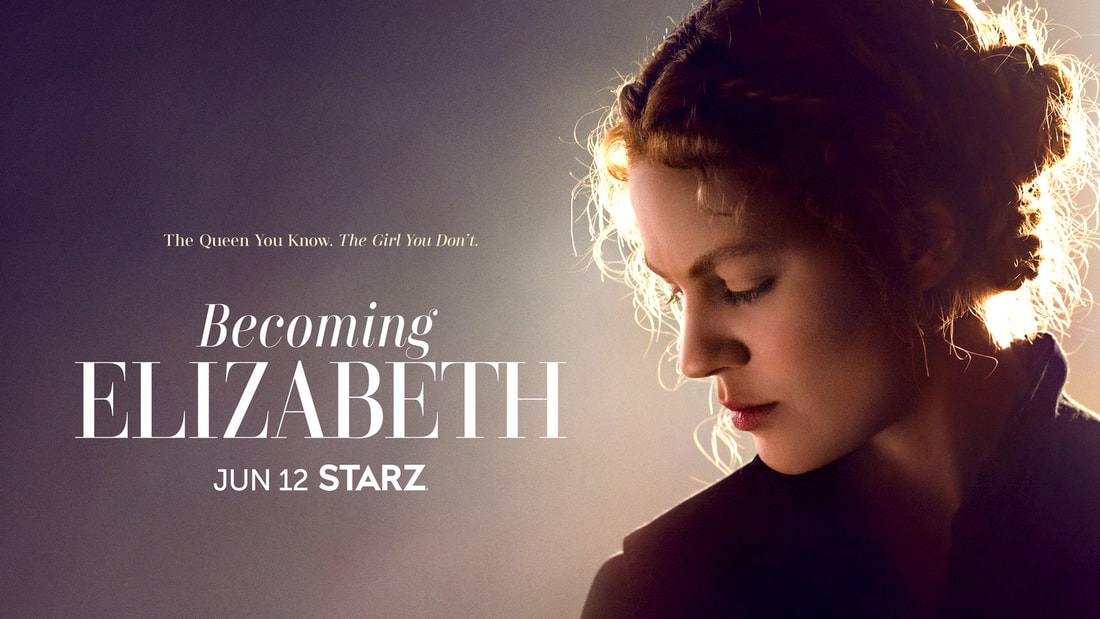 Anya Reiss is a talented writer that has worked on such shows on EastEnders, and George Ormond is a decorated executive producer that has worked on multiple shows and mini-series, also including EastEnders and currently, they are now the brain trust of the new STARZ series, Becoming Elizabeth, and we here at NTG had the opportunity to sit down with both of them to discuss their new show. John Betancourt: Let’s talk a little bit about what attracted both of you to explore this chapter of Elizabeth’s life? Anya Reiss: I think it was it's such an “un-done”, period of history. And I assumed because it wasn't done, I assumed that Edward must have been alive for like a year and he was in bed, most of it. And then Mary is always the foil to Elizabeth as the bad sister that came before the good one. And she’s skipped over too. And so, I kind of thought there will be nothing in this time. And then George told me the story. And it was just extraordinary. And I just suddenly went this is such a, one, much longer time than I thought and the absolute formative years of any young person's life. And then there was so much amazing stuff that happened in it, just in terms of the actual history of what's going on. And I think just as important, and actually kind of more naughty and interesting and gritty than the kind of whitewashed idea of Elizabeth, which is just this great, glorious ascendance. There's actually some interesting things, chaotic things going on before it. George Ormond: Well, I couldn't believe nobody had told this story. I think the characters are incredible. It's the most insane roller coaster, from the death of Henry the Eighth, you're sort of thrown into this arena where everybody knows each other. They’re friends, they've all grown up with each other, or they're related to each other, or their brother and sister or whatever. And they're thrown into this kind of gladiatorial arena where they have to… just to stay alive, keep on trying to climb this ladder. And I mean, I thought the characters were amazing from you know, Elizabeth, at the heart of it, whose story we all think we know, we really, really don't. And this bit of her story is like a crucible that helps to form who she is, and, you know, her relationship with Thomas Seymour… which is complicated, and you know, completely engrossing, but really kind of asks big questions about power and, or, you know, the nature of the relationship between them, to all the other characters, you know, like Mary, who we know in history, as Bloody Mary. But actually, if you're looking at her in this period of her life, she's a really intelligent, decent, kind of determined outsider just trying to keep her head above water. And it's a really addictive story as well. I mean, when we look at it, the most extraordinary stuff happens. And so, we just thought it'd be, really, I mean, an amazing arena for Anya to write about, and a really addictive story. John Betancourt: See now you bring up a very good point about the characters. Because I couldn’t help but notice how realistic and modern, they are in a way, and I was curious as to what went into the decision to create such grounded characters? Anya Reiss: The ambition was always to do a kind of ensemble show. And to do that, that slightly filleted, blinkered style of history, drama, which is where you have to kind of make all the events like happen to the main character, and kind of narrow everyone's story into being that person's story and kind of show how they shake the world alone. And I think we've always said that Elizabeth isn't the weather maker in this, she's just trying to survive the weather. And I think everyone's story, we try and embrace as fully as we can, and I think kind of hand in hand with that, is you embrace their humanity in each of them and in each other. And I think it's one of the things that I got most struck by reading the research was how human they felt, and how similar actually their moral code is to where we are now. There's different standards, there was different practices. There's a kind of thread of humanity and thread of morality, which we sometimes disregard now and go; “Oh, it was a different time. They didn't care about those things.” And they did. And people felt things the same way they do now, and I think that for me was a revelation. And so, it's not really us trying to put a go. We're doing a modern style of character. I think we're just trying to do… these are real people, kind of. George Ormond: I will say there's two different ways of thinking about history. One is kind of these events happen. Because these are the kind of, you know, the undercurrent stuff. There’s another way of looking at it, which is people do extraordinary things. So, these characters being who they are, kind of colliding and, sometimes, jostling for position, or sometimes doing something stupid, you know, it's really human mistakes that we make, as well as kind of ambitions that they have. That is what makes us, that is what drives the story. So, it's kind of seeing history, from the point of view of people who don't know they're in history, they're just living their lives. And that's really, I felt that was Anya’s approach to it from the beginning. And it's really refreshing. John Betancourt: Now this is a visually gorgeous show through and through, I was curious as to what challenges went into building just a visually authentic world? George Ormond: Well, I guess our starting point was, we all think we know this world, we've all seen, you know, Cate Blanchett’s movie Wolf Hall, The Tudors, you know, we've seen a lot of this stuff on screen. So how do you bring it to life in a way that makes the world fit, makes the audience feel like saying that they're seeing it for the first time? They're immersed in it, they can smell it, they can feel the costumes, and at the same time, bring an atmosphere that speaks of the kind of the story that we're telling. You know, that this world is dangerous, and uncertain and live moment to moment. And I think so… you know, our director, our lead director, Justin Chadwick, worked incredibly hard to create a world that had that texture, and that feel, from the set design to the costume design, to the hair and makeup, we said, you know, right from the beginning, this is a world where people sweat, you know? They get punched, it hurts, you know, all of that stuff, you really want to feel what they wear at home is different from what they wear in court. And you know, everything, they're not wearing costumes, they're wearing clothing, that has a purpose. We even used real flame to light, to try to create that atmosphere. So, the lighting is very informed by natural light coming through the windows with candles to balance that out or at night just lit by fire and candles. And that also influences the staging. Because if you're in one of those medieval castles, you gotta go stand by the window to see each other. And then the camera is roving and trying to, you know, follow these characters as they maneuver around each other. And I think that gives it a sort of nervous energy, that is propulsive and live and very tired. It's got a real heartbeat. And our lead DOP (Director of Photography), Adolfo Veloso gave it that live feel with a real cinematic kind of subjective approach that was just, as you say, visually… fantastic. I thought. Anya Reiss: I mean, yeah, I think there's definitely scenes where the character feels like another character, which is really exciting. And I don't know, we had we had the most amazing sets, I think what was amazing… because like, I, I used to work on EastEnders, you don't have roofs on the sets of EastEnders, and they they're not all connected. And I remember walking into some of our sets and I forgot I was on a set, and I got lost in them as well, which I thought was amazing. But it was just, everything we did felt totally real. Or at least as much as it could feel real. But um, I think it really informed the actors as well because they were very, it was a very intense process. I think especially those early couple of episodes, which are pretty intense anyway, I think there was a real sense of… you get in you do a scene, but there’s cameras, an inch from your face, you've got the costumes, weighing you down. You're stuck in a little room, and we tried to make it quite real for them. And I think I hopefully we did, and hopefully they enjoyed it too. This interview has been lightly edited and condensed for clarity.
0 Comments
Leave a Reply. |
Archives
January 2025
|
|
© 2012-2025, Nerds That Geek LLC.
All Rights Reserved. |
uWeb Hosting by FatCow

 RSS Feed
RSS Feed